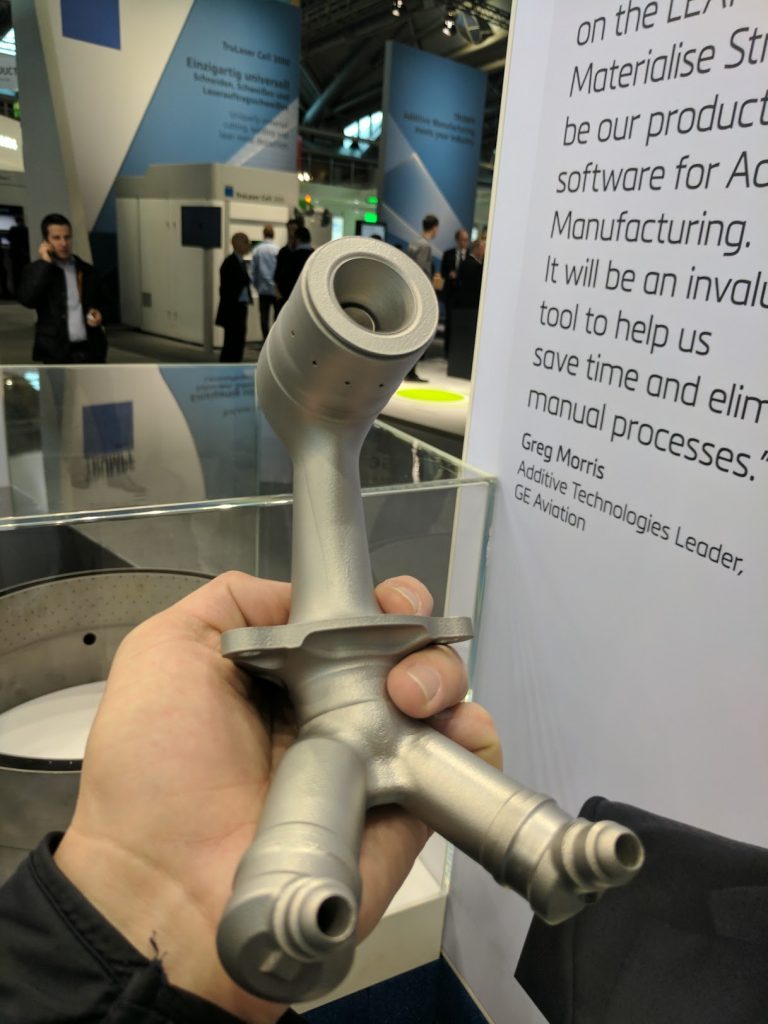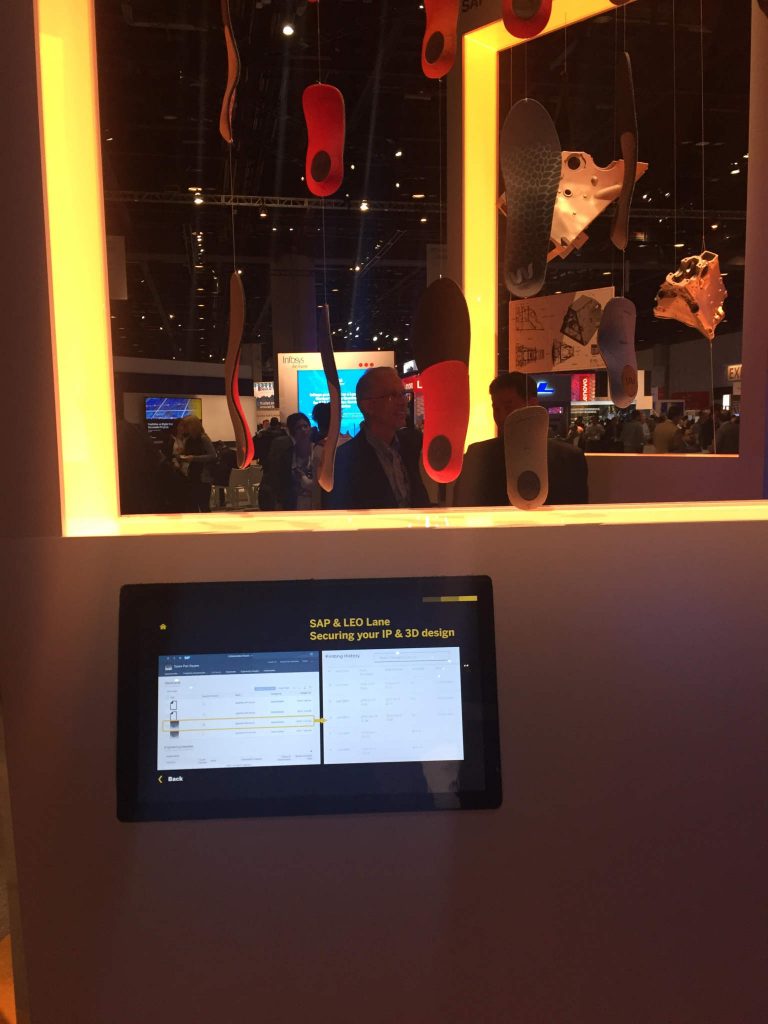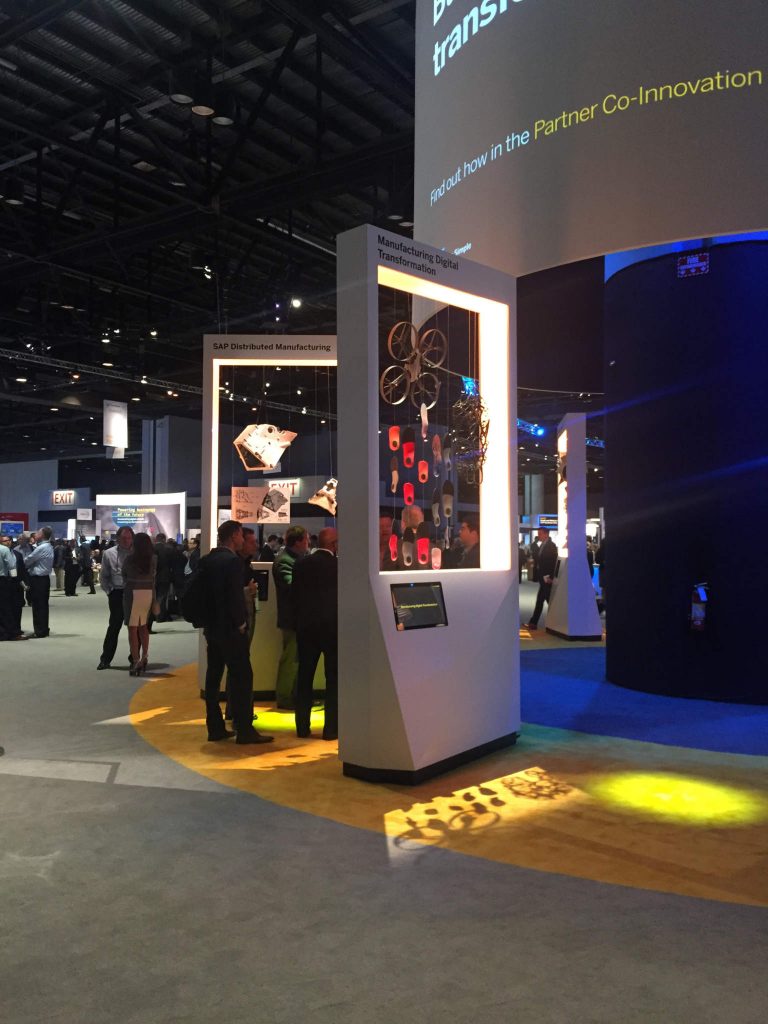In this article looking at the future of 3D printing, Lee-Bath Nelson advises on the need to be smart about Distributed Additive Manufacturing.
Lee-Bath Nelson is VP Business at LEO Lane, a company she co-founded that offers brands a way to stay in control of the quality and quantity of their parts and products in the AM/DAM ecosystem. Previously she served as Corporate Director of Business Development at Orbotech (NASDAQ:ORBK). Prior to that she spent over a decade as a Partner in Venture Capital funds most recently as a General Partner at Plenus Venture Lending and before that at TDA Capital Partners, a fund that was an early investor in Objet Geometries (now Stratasys).
The Missing Piece Obscured by the 3D Printing Hype
Additive Manufacturing in 5 Years – the Quiet Game Changer
By Lee-Bath Nelson, Co-Founder and VP Business at LEO Lane
Earlier this quarter the Wohlers Report for 2017 came out – this report is much anticipated and quoted in the Additive Manufacturing ecosystem (and, yes, I will quote it too…). Shortly thereafter, Sculpteo released their State of 3D printing report based on a survey of 900+ companies with an average budget of under $10k/year for 3D printing. To varying degrees, both these reports (and others analyzing this ecosystem) are missing the bigger revolution that is happening under our noses and that will only accelerate over the coming 5 years. Its impact is huge.
This revolution might be harder to see since it is mixed in with a much more mature, prototype and maker, market that is served by 3D printers which can muddy the view when reading these reports, especially the one from Sculpteo. We’ll get back to these reports in a bit, but let’s first consider the impact this ecosystem already has and could have within 5 years on business at corporations that use Additive Manufacturing (AM) for manufacturing.
Seamless Innovation
New technology, when it innovates and disrupts does exactly that – it disrupts and disturbs many processes in the organization. This makes its adoption difficult – many champions are needed in the organization to make the adoption happen and sometimes re-education of many disciplines in the corporation is needed. As a technology matures either this disruption becomes commonplace and no re-education is needed or the technology matures to the level that it can be seamlessly integrated with the existing business processes as they continue to evolve naturally without major interruptions to the existing workflow.
One example is as simple as a data center. Initially to create your own data center you would have needed real estate, lawyers, capital expenditure, procurement, personnel, and ongoing operating costs – touching many of the departments in the company (IT, Operations, HR, Legal, Finance, Supply Chain, etc). These days having a virtual datacenter in the cloud is as easy as starting a standard AWS (or other provider’s) subscription in IT – no fuss no muss but the same functionality and the only cost is a much reduced operational one.
Exponential Benefits
In 5 years, many business processes in the corporation will be unaffected by Additive Manufacturing – – while the benefits accrue to the corporation. Procurement will proceed with the same ERP systems, even if a noticeable percentage of spare parts will be held In Virtual Inventory rather than physical inventory and will only be manufactured on demand. Even the inventory of the rest of the parts will be unchanged because of this new technology, except to shrink in size – a good thing: SAP currently estimates global inventory levels at over $10T.
Perhaps once in a while the physical inventory will be reviewed for candidates to move to virtual inventory but most often it will be new parts and products that are designed and engineered directly for virtual inventory and on demand manufacturing. Since the ERP and other business systems will be integrated with control systems for virtual inventory and Distributed Additive Manufacturing (DAM), all other processes such as finance and operations will also be undisturbed. Businesses will be able to save up to 50% of their total cost on some parts automatically. If cost of ownership reductions are possible thanks to a part (as is the case with GE’s fuel nozzle that lowers fuel consumption by 15%), then a premium price can be charged for it, generating additional revenue sources.

New Challenges and the Ultimate Win-Win
That’s just the tip of the iceberg. The prohibitive cost of creating and holding physical inventory of products and parts has been inhibiting many potential business initiatives that will be completely possible in 5 years. Customization and better tailoring than the existing standard sizes for consumer goods is one that always comes up but variation and tailoring is useful in practically every other situation as well. From more versatile and precise tooling for manufacturing machines, to allowing parts to vary depending on climate differences between locations, to changing the entire product to account for local differences such as climate, culture or regulation.
In addition, designers and engineers will be able to conceive parts and products that can’t be manufactured any other way. Again, without disrupting other processes, these products will be available to consumers. There will be new challenges created by both this and the possibility of variation and customization: there is limited shelf space in stores and even a limit to visible virtual shelf space in online stores. E-commerce will have to come up with a modified buying experience that is much more tailored than today, using the known information about the buyer to tailor their shelf and offer those variations and customizations that are likely to appeal. Brick and mortar retailers might have to go for a modified, partly digital, buying experience as well. I hope that will happen within 5 years. Overall business and end consumers will be offered a better product, in a better experience, at a lower cost while still allowing corporations to increase profits. The kind of win-win everyone loves!

The Missing Puzzle Piece
This brings me back to the reports I started from. I’d like to take the “outside view”, as Prof Daniel Kahneman calls it, and separate for a moment from the “inside view”. Quoting the growth and growth projections in sales of 3D printers and materials is important to understanding the future but something much more important is missing. It is the impact of the Additive Manufacturing ecosystem on the much larger $12T per year manufacturing market and on the huge corporates and brands taking part in and using it. These corporates and brands have billions in revenues and budgets much larger than $10k/year to use AM to increase efficiency and quality in their manufacturing and supply chain. Their impact is on themselves but also on the entire market they serve (Harvard Business Review mentions an industry that went from 0% to 100% AM in just 500 days).
The relevant metrics missing from these reports are the value of Additively Manufactured end parts and products and the cost saving they were able to bring to the corporations that used AM and Distributed AM (DAM) to manufacture them in 2016. GE, for example, set a goal of over $3Bn cost savings from AM/DAM by 2026. The Wohlers report includes the number $3.66Bn of end part production but that is likely the cost of production and not the value of these parts, and certainly not the cost savings. The value is presumably higher, and possibly much higher and it’s just the beginning – this market is poised for strong growth. It would be insightful to see Wohler’s numbers for these metrics going forward.
McKinsey’s analysis implies that over $400Bn of products and parts will be additively manufactured in 2025, and SAP estimates the addressable market of additively manufactured products and parts to be $640Bn/year. With these numbers the 5 year predictions above are put in proportion and indeed the impact is huge. To realize these numbers and, on the way, make the above 5 year predictions come true, brands and corporations have to be smart about Distributed Additive Manufacturing (DAM) and their control thereof. In short, start being DAM Smart today!

Ms Nelson serves as a director on the boards of LEO Lane, Elron (traded on TASE and Nasdaq), and Team8 Cyber Consulting. She also serves on the board of “Ore to Excellence“, a non profit organization promoting excellence and volunteerism among teens and children in the periphery. Ms. Nelson has a B.A. and an MSc. each in Computer Science from the Technion, Israel Institute of Technology, and a Ph.D. in Behavioral Finance from the Graduate School of Business, Stanford University, CA.
For more insights into the future of 3D printing, sign up to our newsletter and follow our active social media channels. Let us know your thoughts about this perspective on the future of 3D printing in the comments below.
This is a guest post in our series looking at the future of 3D Printing. To celebrate 5 years of reporting on the 3D printing industry, we’ve invited industry leaders and 3D printing experts to give us their perspective and predictions for the next 5 years and insight into trends in additive manufacturing.
If you’d like to participate in this series then contact us for more information.
More information about LEO Lane is available here.


